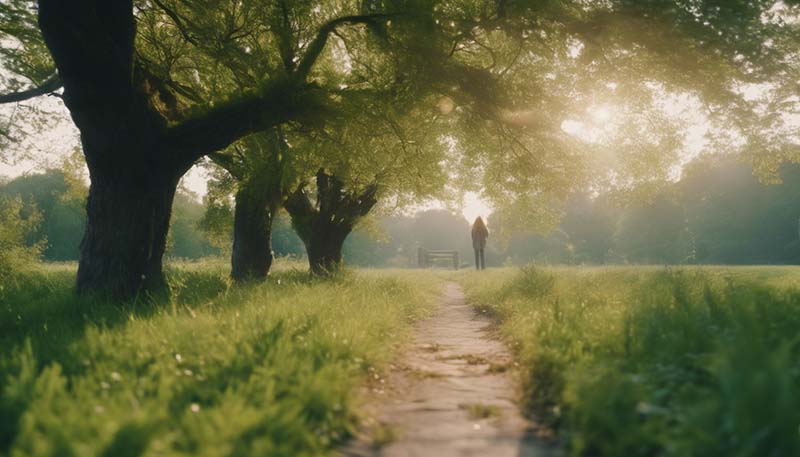The Benefits of Green Spaces for Mental and Physical Health
Green spaces are areas of land that are partly or wholly covered with grass, trees, shrubs, or other vegetation. They can be found in various forms such as parks, gardens, forests, and even urban green roofs. The importance of green spaces goes beyond their aesthetic appeal; they offer a wide range of benefits for both mental and physical health. This article explores the various ways in which green spaces contribute to our well-being and the reasons why we should strive to preserve and increase these areas.
Mental Health Benefits
Mental health is a critical aspect of overall well-being. Green spaces have been linked to improved mental health in numerous ways:
Stress Reduction
One of the most significant benefits of green spaces is their ability to reduce stress. Being in a natural environment can lower cortisol levels, which are associated with stress. A study published in the Journal of Health Psychology found that participants who spent time in a natural setting experienced a greater decrease in cortisol levels than those who spent time in an urban environment.
Advertisement
Improved Mood
Exposure to green spaces can also improve mood and reduce symptoms of depression and anxiety. A study published in Environmental Science & Technology found that people living in areas with more green space had a lower risk of developing depression and anxiety.
Cognitive Function
Green spaces can enhance cognitive function, particularly in children. Research published in the Journal of Environmental Psychology suggests that children who have access to green spaces perform better in cognitive development tests compared to those who do not.
Increased Social Interaction
Green spaces provide a setting for social interaction, which is essential for mental health. Community gardens, parks, and other green areas encourage people to gather, interact, and build relationships, which can help combat feelings of loneliness and isolation.
Physical Health Benefits
Green spaces also contribute to physical health in several ways:
Encouraging Physical Activity
One of the primary ways green spaces promote physical health is by encouraging physical activity. Parks, trails, and other green areas provide an inviting environment for walking, running, cycling, and other forms of exercise. A study published in Preventive Medicine found that people who live closer to green spaces are more likely to engage in physical activity.
Improved Air Quality
Green spaces can improve air quality by absorbing pollutants and producing oxygen through photosynthesis. Trees and plants can filter out harmful pollutants, making the air cleaner and healthier to breathe.
Reduced Heat Island Effect
Urban areas can experience a heat island effect, where temperatures are significantly higher than in surrounding rural areas. Green spaces can help mitigate this effect by providing shade and cooling through evapotranspiration, the process by which plants release water vapor into the air.
Access to Healthy Food
Green spaces, such as community gardens, can provide access to fresh, healthy food, particularly in urban areas where access to fresh produce may be limited. Growing your own food can be a rewarding and healthy way to engage with green spaces.
Preserving and Increasing Green Spaces
Given the numerous benefits of green spaces for mental and physical health, it is crucial to preserve and increase these areas. Here are some ways to achieve this:

Urban Planning
Urban planners should prioritize the inclusion of green spaces in city planning. This can include creating new parks, preserving existing ones, and incorporating green roofs and walls into new buildings.
Community Involvement
Communities can get involved in the creation and maintenance of green spaces. This can include participating in community garden projects, tree planting initiatives, or advocating for the preservation of local green spaces.
Education and Awareness
Increasing public awareness of the benefits of green spaces can help garner support for their preservation and expansion. Educational campaigns can inform the public about the importance of green spaces for health and well-being.
Policy and Legislation
Governments can implement policies and legislation to protect and increase green spaces. This can include zoning laws that require a certain amount of green space in new developments, as well as funding for the maintenance and improvement of existing green areas.
Conclusion
Green spaces are essential for our mental and physical health, providing a multitude of benefits that extend beyond their visual appeal. By understanding and advocating for the preservation and expansion of these areas, we can contribute to a healthier, happier, and more sustainable future for our communities.
Comment Form